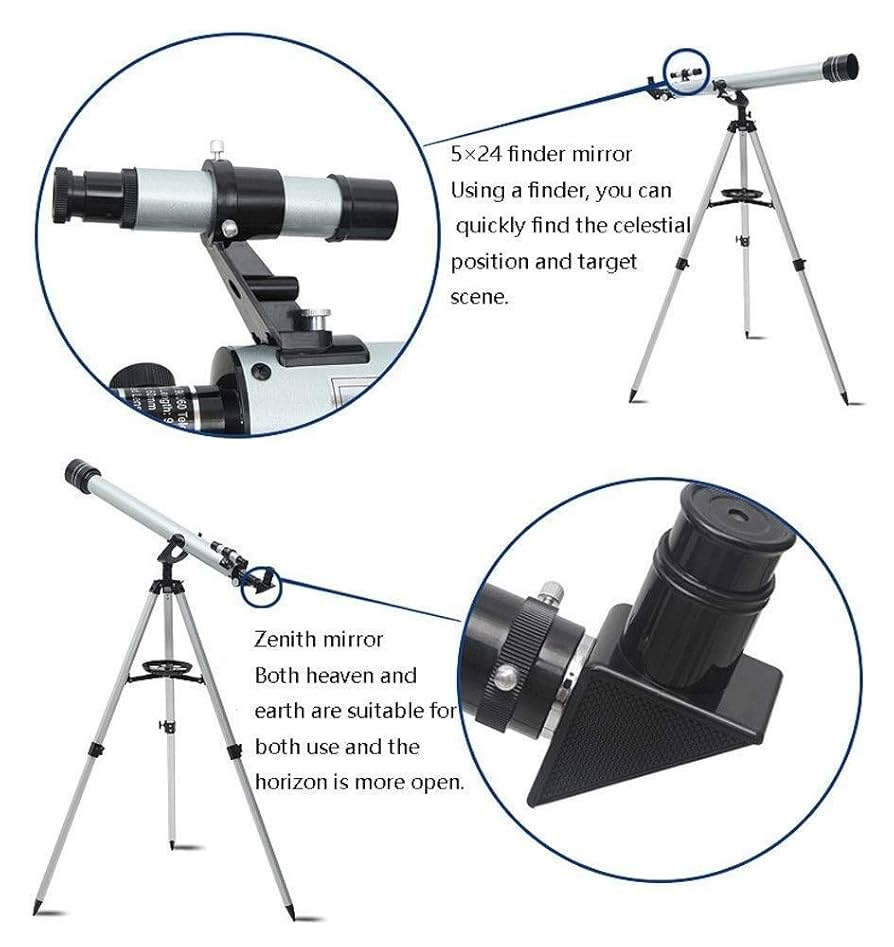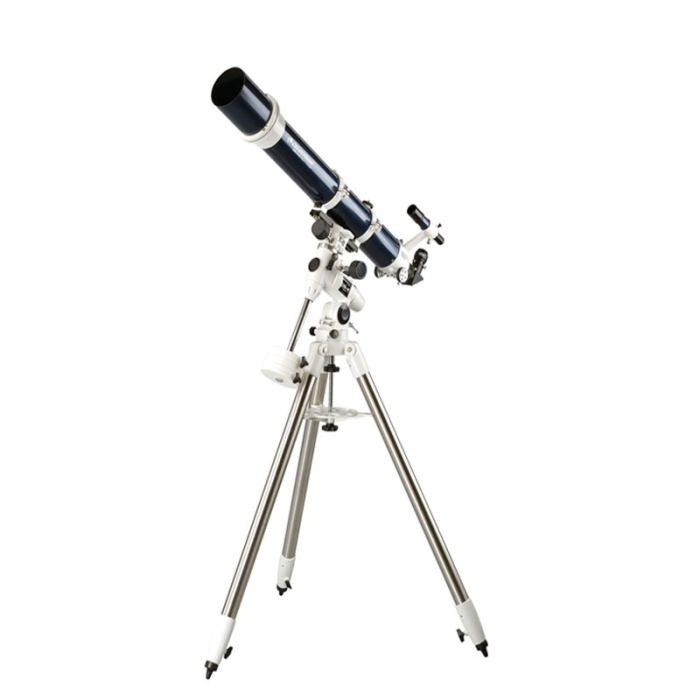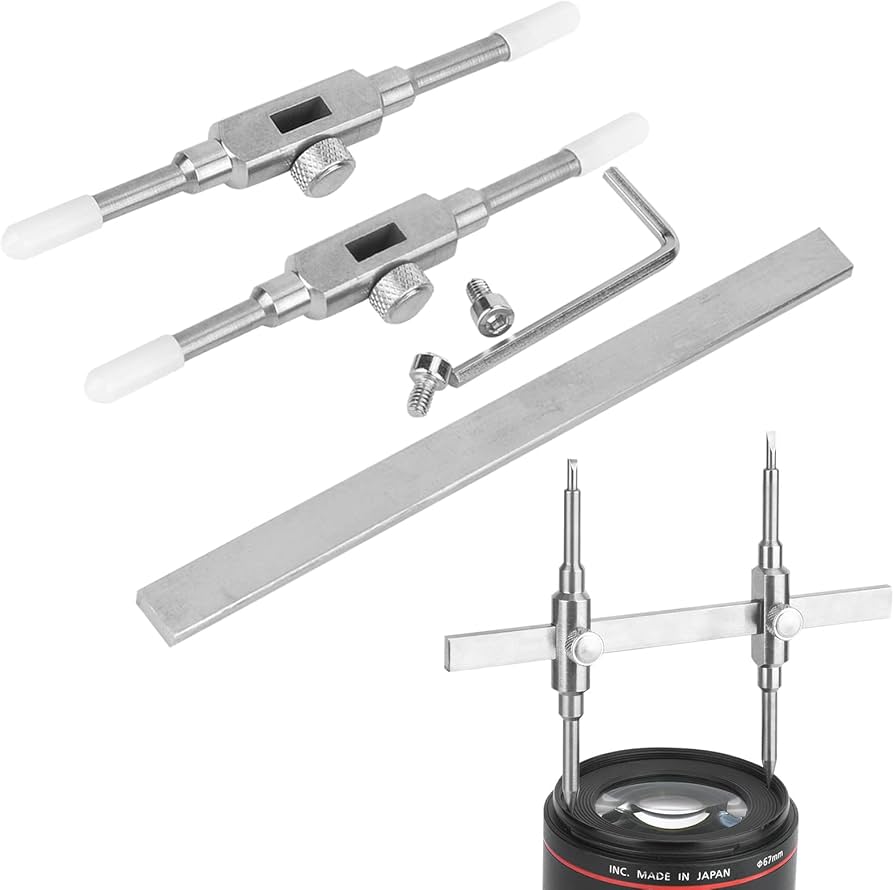If you own a refracting telescope, you know how exciting it is to explore the night sky with clear, crisp views. But to keep your telescope working perfectly, regular maintenance is key.
You might wonder how to clean it without causing damage or how often you should check for issues. This guide will give you simple, practical tips that anyone can follow to protect your investment and enjoy sharper images every time you look up.
Keep reading to discover easy steps that make a big difference in your stargazing experience.

Cleaning The Lenses
Cleaning the lenses of your refracting telescope is key for clear views. Dust, fingerprints, and smudges can blur the image. Regular cleaning keeps your telescope in top shape. It also protects the delicate glass from damage. Proper cleaning needs the right tools and careful steps.
Choosing The Right Cleaning Tools
Use a soft brush or air blower to remove loose dust. Avoid using tissue paper or rough cloth. A microfiber cloth works best for wiping lenses. Use lens cleaning solution made for optical glass. Never use household cleaners or water directly on lenses.
Step-by-step Cleaning Process
Start by blowing away dust with an air blower. Next, gently brush the lens with a soft brush. Apply a few drops of lens cleaner on the microfiber cloth. Wipe the lens in a circular motion, starting from the center. Use light pressure to avoid scratching. Let the lens air dry or gently pat with a dry cloth.
Avoiding Common Cleaning Mistakes
Never touch the lens surface with fingers. Do not use paper towels or tissues for cleaning. Avoid spraying liquid directly on the lens. Do not scrub hard or use abrasive materials. Clean only when lenses are visibly dirty. Over-cleaning can wear down lens coatings.
Aligning The Optics
Aligning the optics of a refracting telescope is crucial for clear and sharp images. Proper alignment ensures that light passes through lenses correctly. This reduces blurry or distorted views of the night sky. Regular checks and adjustments keep your telescope performing well.
Checking For Misalignment
Start by looking through the eyepiece at a distant object. Notice if the image looks blurry or off-center. Look for double images or shadows around objects. These signs often mean the optics are misaligned. Also, gently tap the telescope. If the image shifts a lot, the alignment may be loose.
Techniques For Collimation
Collimation means adjusting the lenses to line up perfectly. Use a collimation cap or a simple piece of paper with a small hole. Look through this tool to see if the lenses line up. Adjust the screws on the telescope’s tube slowly. Move the lenses until the image looks clear and centered. Check the view again after each adjustment.
When To Seek Professional Help
Some alignment issues need expert care. If you cannot fix the blur or double images, ask a professional. Also, avoid forcing screws or parts during adjustments. This can damage the telescope. If the problem persists or parts seem broken, take the telescope to a service center.
Protecting The Telescope Body
Protecting the telescope body is key to keeping your refracting telescope in good shape. The body holds the lenses and other parts in place. Any dirt, moisture, or damage can affect the view. Simple care steps can extend your telescope’s life and performance.
Using Dust Covers
Dust covers shield the telescope from dust and dirt. Use them when the telescope is not in use. Covers prevent particles from settling on the lenses and body. This keeps the optics clear and reduces cleaning needs. Choose covers that fit well and are easy to put on and take off.
Storing In Suitable Environments
Store the telescope in a dry and cool place. Avoid areas with high humidity or temperature changes. Moisture can cause rust or mold inside the telescope. Keep it away from direct sunlight to prevent damage. A proper environment helps keep the telescope body and lenses safe.
Handling During Transport
Handle the telescope gently during transport. Use a padded case or bag to protect it from bumps. Avoid sudden movements that can misalign the lenses. Carry the telescope by its main body, not by the lens or eyepiece. Careful handling prevents damage and keeps the telescope ready for use.

Maintaining The Mount And Focuser
Maintaining the mount and focuser of your refracting telescope keeps your views clear and steady. These parts support smooth movement and precise adjustments. Regular care helps avoid wear and tear. It also extends the telescope’s life. Simple steps can make a big difference.
Lubricating Moving Parts
Apply a small amount of lubricant to gears and joints. Use a lubricant made for delicate instruments. Avoid overuse; too much can attract dust. Smooth movements reduce strain on the mount and focuser. This keeps adjustments easy and accurate.
Tightening Loose Components
Check screws and bolts often. Loose parts cause wobbling and poor focus. Use the right tool to tighten gently. Avoid overtightening to prevent damage. Secure parts maintain stability during observations.
Regular Function Checks
Test the mount and focuser before each use. Move them through their full range. Listen for unusual sounds or stiffness. Fix issues early to avoid bigger problems. Consistent checks keep your telescope working well.
Preventing Moisture And Fungus
Moisture and fungus can damage your refracting telescope’s lenses and mirrors. Protecting your telescope from these threats helps keep clear views. Taking steps to prevent moisture and fungus extends the life of your telescope. This section covers simple, effective ways to keep your telescope dry and clean.
Controlling Humidity Levels
Humidity causes moisture buildup inside your telescope. Store your telescope in a dry room with low humidity. Use a dehumidifier to keep air moisture below 50%. Avoid storing the telescope in basements or damp areas. Proper airflow around the telescope helps reduce moisture risks.
Using Desiccants
Desiccants absorb moisture and keep the inside dry. Place silica gel packs inside the telescope case or storage box. Replace or recharge desiccants regularly to maintain their effectiveness. Avoid using loose desiccants that can scatter inside the telescope.
Identifying Early Signs Of Fungus
Fungus appears as small spots or web-like patterns on lenses. Check lenses regularly under bright light for any unusual marks. Fungus can blur images and damage coatings over time. Early detection allows quick cleaning or professional help before serious damage occurs.
Routine Inspection Schedule
Keeping a refracting telescope in top shape needs a steady routine inspection schedule. Regular checks help catch small issues before they grow. This saves time and money. A clear schedule makes maintenance easier and keeps the telescope ready for use.
Monthly Maintenance Tasks
Clean the lenses gently with a soft cloth. Check for dust or smudges that blur views. Inspect the focus mechanism to ensure it moves smoothly. Tighten any loose screws on the frame or mount. Test the telescope’s alignment to keep images sharp. These simple tasks keep the telescope working well every month.
Seasonal Deep Checks
Look inside the tube for dust or spider webs. Use a blower to remove particles without touching lenses. Check for signs of moisture or rust on metal parts. Lubricate moving parts lightly to prevent stiffness. Review the tripod or mount for cracks or wear. Seasonal checks prevent bigger problems from developing over time.
Keeping A Maintenance Log
Write down all maintenance activities and dates. Note any problems or repairs done on the telescope. This helps track what works and what needs more care. A maintenance log also reminds you when the next check is due. Keeping records makes telescope care simple and organized.

Frequently Asked Questions
How Often Should I Clean My Refracting Telescope Lenses?
Clean the lenses only when necessary to avoid damage. Use a soft brush or air blower to remove dust. For smudges, gently wipe with lens cleaning solution and a microfiber cloth. Regular cleaning ensures clear, sharp images.
What Is The Best Way To Store A Refracting Telescope?
Store your telescope in a dry, dust-free place. Use a protective case or cover to prevent scratches and dirt buildup. Avoid extreme temperatures and humidity. Proper storage prolongs the telescope’s lifespan and maintains optical quality.
How Do I Prevent Dew From Forming On My Telescope Lenses?
Use a dew shield or heater to keep lenses dry during humid nights. Store the telescope in a warm, dry environment before use. Preventing dew helps maintain clear viewing and protects the optics from moisture damage.
Can I Use Household Cleaners On My Telescope Lenses?
No, avoid household cleaners as they can damage coatings on lenses. Use only specialized lens cleaning solutions and soft cloths. Proper cleaning products preserve optical clarity and prevent lens scratches.
Conclusion
Proper care keeps your refracting telescope clear and sharp. Clean lenses gently with a soft cloth. Store the telescope in a dry, safe place. Check screws and mounts often to keep it steady. Avoid touching the glass with fingers. Regular maintenance helps you enjoy better views.
Small efforts extend your telescope’s life. Keep your stargazing experience smooth and fun. Simple steps make a big difference. Your telescope will reward you with clearer skies.



